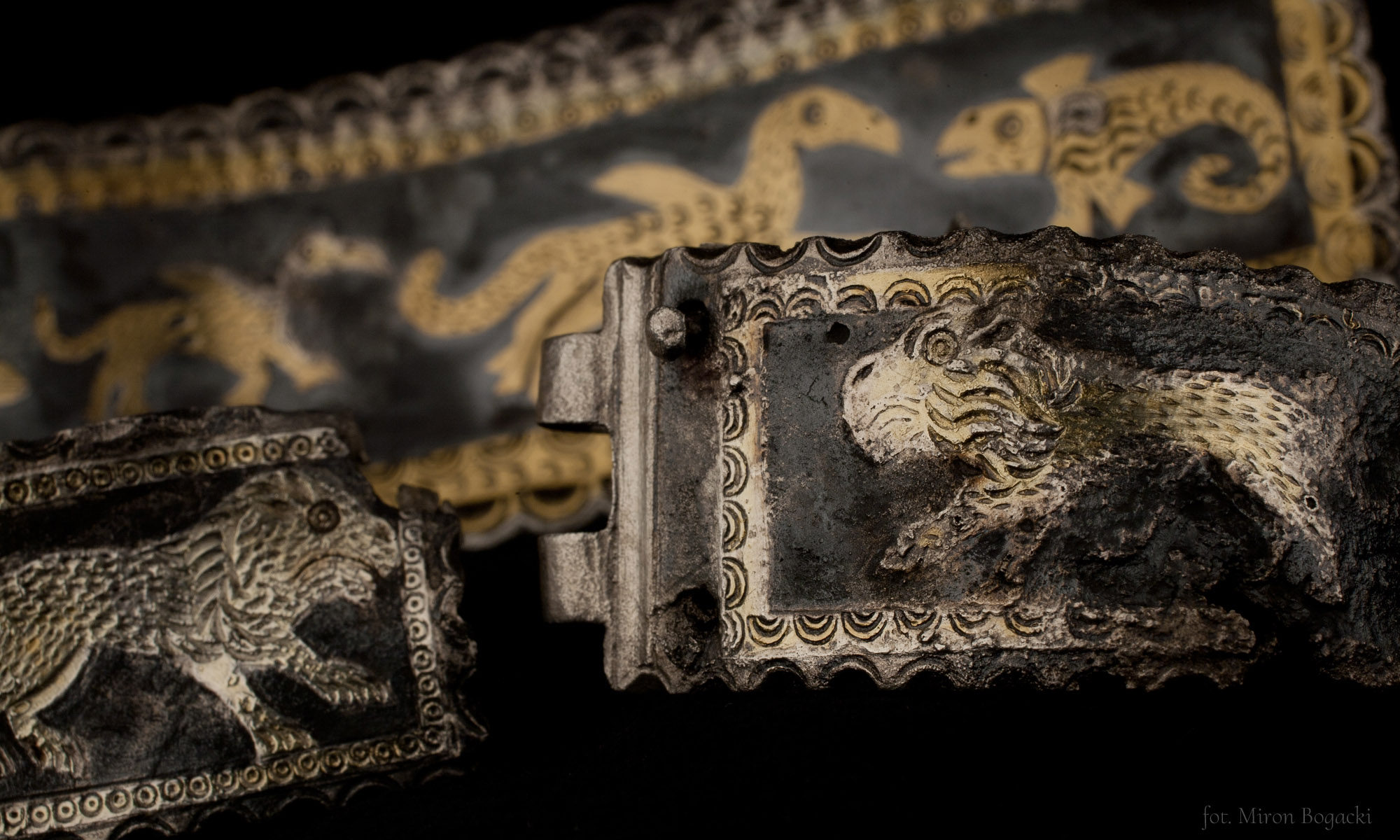
dr hab. Aldona Mueller-Bieniek. prof. ucz.
Katedra Bioarcheologii
Laboratorium Archeologicznych Analiz Specjalistycznych
e-mail:
a.muellerbie@uw.edu.pl
dyżur:
poniedziałek 11.30–13.30, w pokoju 0.25, inne terminy po wcześniejszym uzgodnieniu mailowym
zainteresowania naukowe:
– archeobotanika
– archeologia środowiskowa
– izotopy stabilne węgla i azotu w badaniach paleodietetycznych i paleośrodowiskowych
bibliografia (ostatnie 5 lat, wybrana):
Filipović, D., Jones, G., Kirleis, W., Bogaard, A., Ballantyne, R., Charles, M., de Vareilles, A., Ergun, M., Gkatzogia, E., Holguin, A., Hristova, I., Karathanou, A., Kapcia, M., Knežić, D., Kotzamani, G., Lathiras, P., Livarda, A., Marinova, E., Michou, S., Mosulishvili, M., Mueller-Bieniek, A., Obradović, D., Padgett, M., Paraskevopoulou, P., Petridou, C., Stylianakou, H., Zerl, T., Vidas, D., Valamoti, S.M., 2023. Triticum timopheevii s.l. (‘new glume wheat’) finds in regions of southern and eastern Europe across space and time. Veg. Hist. Archaeobotany. https://doi.org/10.1007/s00334-023-00954-w
Mueller-Bieniek, A., Moskal-del Hoyo, M., Korczyńska-Cappenberg, M., Kapcia, M., Nowak, M., 2023. Plant macro-remains from a large middle Neolithic settlement in SE Poland – Internal diversification and possible status of the settlers. J. Archaeol. Sci. Rep. 49, 104016. https://doi.org/10.1016/j.jasrep.2023.104016 (https://authors.elsevier.com/a/1gyyz,rVDBflG%7E -free access until 12.VI.2023)
Korczyńska-Cappenberg, M., Nowak, M., Mueller-Bieniek, A., Wilczyński, J., Pospuła, S., Wertz, K., Kalicki, T., Biesaga, P., Szwarczewski, P., Kapcia, M., Cappenberg, K., Wacnik, A., Hoyo, M.M., 2023. Middle Neolithic agricultural and land-use models in southern Poland: A case-study of the long-term settlement in Mozgawa. The Holocene. https://doi.org/10.1177/09596836231157065
Mueller-Bieniek, A., Moskal-del Hoyo, M., Wilczyński, J., Przybyła, M.M., 2022. The same spot – Two different worlds: Plant and animal remains from multiculture site at Sadowie in southern Poland. Journal of Archaeological Science Reports 45, 103608.
Mueller-Bieniek, A., 2021. Owoce i nasiona ze stanowisk archeologicznych jako źródło wiedzy o paleośrodowisku, in: Gancarski, J. (Ed.), Zmiany środowiska i warunków klimatycznych w okresie od schyłkowego paleolitu do końca średniowiecza i ich wpływ na warunki życia człowieka w północnej części Europy Środkowej. Muzeum Podkarpackie w Krośnie, Krosno, pp. 87–120.
Mueller-Bieniek A., Rusishvili N., Jalabadze M., Kvavadze E., 2021. Plant remains from Berikldeebi, Georgia, 1979-1992. Bioarchaeology of the Near East 15, 77–84.
Salavert, A., Zazzo, A., Martin, L., Antolín, F., Gauthier, C., Thil, F., Tombret, O., Bouby, L., Manen, C., Mineo, M., Mueller-Bieniek, A., Piqué, R., Rottoli, M., Rovira, N., Toulemonde, F., Vostrovská, I., 2020. Direct dating reveals the early history of opium poppy in western Europe. Scientific Reports 10, 1–10. https://doi.org/10.1038/s41598-020-76924-3
Mueller-Bieniek, A., Jarosińska, J., 2020. Neolityczne ślady użytkowania roślin w rejonie Dolnej Wierzycy i Janki na Pojezierzu Starogardzkim, in: Felczak, O. (Ed.), Wczesny i środkowy neolit na Pojezierzu Starogardzkim w świetle badań nad Dolną Wierzycą i Janką. Archaeological Museum in Gdańsk, Gdańsk, pp. 281–313. ISBN 978-83-956473-2-1
Czajkowska, B.I., Bogaard, A., Charles, M., Jones, G., Kohler-Schneider, M., Mueller-Bieniek, A., Brown, T.A., 2020. Ancient DNA typing indicates that the “new” glume wheat of early Eurasian agriculture is a cultivated member of the Triticum timopheevii group. Journal of Archaeological Science 123, 105258. https://doi.org/10.1016/j.jas.2020.105258
Filipović, D., Meadows, J., Corso, M.D., Kirleis, W., Alsleben, A., Akeret, Ö., Bittmann, F., Bosi, G., Ciută, B., Dreslerová, D., Effenberger, H., Gyulai, F., Heiss, A.G., Hellmund, M., Jahns, S., Jakobitsch, T., Kapcia, M., Klooß, S., Kohler-Schneider, M., Kroll, H., Makarowicz, P., Marinova, E., Märkle, T., Medović, A., Mercuri, A.M., Mueller-Bieniek, A., Nisbet, R., Pashkevich, G., Perego, R., Pokorný, P., Pospieszny, Ł., Przybyła, M., Reed, K., Rennwanz, J., Stika, H.-P., Stobbe, A., Tolar, T., Wasylikowa, K., Wiethold, J., Zerl, T., 2020. New AMS 14 C dates track the arrival and spread of broomcorn millet cultivation and agricultural change in prehistoric Europe. Scientific Reports 10, 13698. https://doi.org/10.1038/s41598-020-70495-z
Mnich, B., Mueller-Bieniek, A., Nowak, M., Wilczyński, J., Pospuła, S., Szostek, K., 2020. Terrestrial diet in prehistoric human groups from southern Poland based on human, faunal and botanical stable isotope evidence. Journal of Archaeological Science Reports 32, 102382. https://doi.org/10.1016/j.jasrep.2020.102382
Mueller-Bieniek, A., Pyzel, J., Kapcia, M., 2020. Chenopodium Seeds in Open-Air Archaeological Sites – How to Not Throw the Baby Out with the Bathwater. Environmental Archaeology 25, 69–81. https://doi.org/10.1080/14614103.2018.1536500
Mueller-Bieniek, A., Nowak, M., Styring, A., Lityńska-Zając, M., Moskal-del Hoyo, M., Sojka, A., Paszko, B., Tunia, K., Bogaard, A., 2019. Spatial and temporal patterns in Neolithic and Bronze Age agriculture in Poland based on the stable carbon and nitrogen isotopic composition of cereal grains. Journal of Archaeological Science Reports. 27, 101993. https://doi.org/10.1016/j.jasrep.2019.101993
Mueller-Bieniek, A., Bogucki, P., Pyzel, J., Kapcia, M., Moskal-del Hoyo, M., Nalepka, D., 2019. The role of Chenopodium in the subsistence economy of pioneer agriculturalists on the northern frontier of the Linear Pottery culture in Kuyavia, central Poland. Journal of Archaeological Science 111, 105027. https://doi.org/10.1016/j.jas.2019.105027
Mueller-Bieniek, A., 2018. Rośliny w życiu średniowiecznych krakowian, in: Izdebski, A., Szmytka, R. (Eds.), Ekobiografia Krakowa. Znak Horyzont, Kraków, pp. 119–151
pełna bibliografia:
ORCID
Research Gate
Google Scholar

